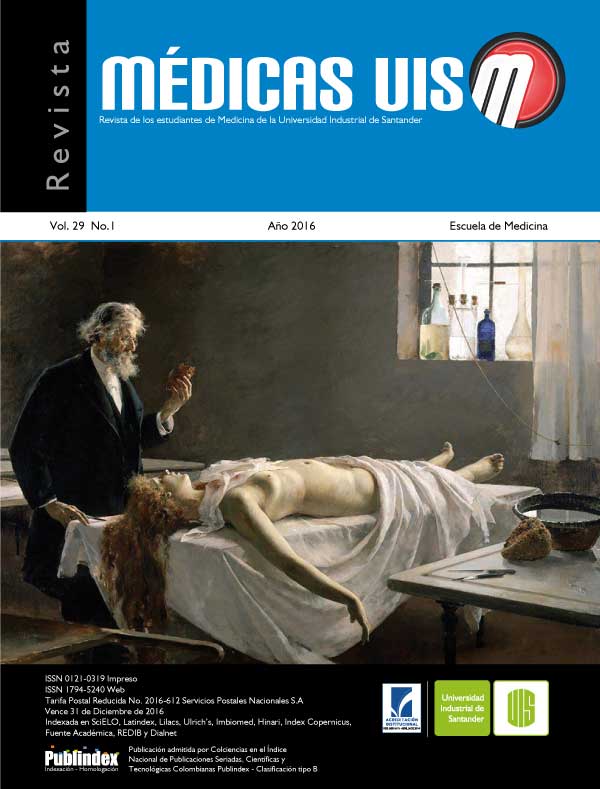Abstract
ABSTRACT
Introduction: breast cancer is the leading cause of death among Brazilian women, 57 120 new cases are expected in 2015. Therefore, there is the need for strategic actions aimed at prevention and early diagnosis. Health education is an action directed on the knowledge of people, and this process helps to reduce cancer morbidity and mortality statistics. Objective: to identify the knowledge level of students in relation to breast cancer, its risk factors and how to prevent them. Material and methods: this is a quantitative, descriptive and exploratory research. Healthcare academics at Federal University of Sergipe conducted a presentation targeted to high school students from public schools, dramatizing real situations, emphasizing prevention and early diagnosis of breast cancer, and after that, they performed data collection using a questionnaire related to breast cancer prevention. Ethical issues were followed according to Resolution 466/12 of the National Health Council. Results: the sample consisted of 185 students, mostly female, between 18 to 20 years old, attending high school. In the last three years, 80.5% reported having received information on breast cancer; 53% received information on breast self-examination. Even after receiving knowledge about the prevention of breast cancer, 61.1% did not perform the breast self-examination; among the ones who did it, 64.9% did not find changes in the breast. Knowledge and awareness of women about breast cancer seem to be related to the delay in diagnosis and also in adherence to screening practices. Conclusion: most people received information about breast cancer, but do not use it correctly. Even though not being able to change some risk factors such as age and family history, the information about prevention is useful for women to know their risks and can take a conscious attitude to early detection. MÉD UIS. 2016;29(1):37-44.
keywords: Breast neoplasms. Health education. Students.
References
Brasil. Ministério da Saúde. Instituto Nacional de Câncer José Alencar Gomes da Silva. Coordenação de Prevenção e Vigilância [Internet]. Estimativa 2014: incidência de câncer no Brasil. Rio de Janeiro: INCA; 2014 [citado 2014 jun 2]. Disponível en:
Lee JH, Glick HA, Hayman JA, Solin LJ. Decision-analytic model and cost-effectiveness evaluation of postmastectomy radiationtherapy in high-risk premenopausal breast cancer patients. J Clin Oncol. 2002;20(11):2713-25.
Matos JCde, Pelloso SM, Carvalho MDB. Fatores asociados à realização da prevenção secundária do câncer de mama no Município de Maringá, Paraná, Brasil. Cad. Saúde Pública.2011;27(5):888-898.
Inumaru LE, Silveira EA, Naves MMV. Faátores de risco e de proteção para câncer de mama: uma revisão sistemtica. Cad. SaúdePública. Rio de Janeiro. 2011; 27(7):1259-1270 .
Batiston AP, Tamaki EM, Souza LAde, Santos MLM. Conhecimento e prática sobre os fatores de risco para o câncer de mama entre mulheres de 40 a 69 anos. Rev. Bras. Saude Mater. Infant. 2011; 11(2): 163-171.
Kim DD, Araujo ALL, Tsai AIA, Kojima FH, Takashima JSI, Otsuka JLF, et al . Saber é prevenir: uma nova abordagem no combate ao câncer de mama. Ciênc. saúde coletiva . 2008;15(Suppl 1):1377-1381.
Brasil. Tribunal de Contas da União. Política Nacional de Atenção Oncológica: relatório de auditoria operacional. Brasília: TCU, 2011 [cited 2014 apr 12]. Available from: URL: http://portal2.tcu.gov.br/portal/page/portal/TCU/comunidades/programas_governo/areas_atuacao/saude/Rel_Oncologia.pdf.
Bata IM, Branco HP. Prevenção do câncer e educação em saúde: opiniões e perspectivas de enfermagem. Texto Contexto Enferm. 2005;14(2):246-9.
Brasil. Ministério da Saúde. Conselho Nacional de Saúde. Resolução n. 196/96. Diretrizes e normas regulamentadoras sobre pesquisa envolvendo seres humanos. Diário Oficial República Federativa do Brasil. Brasília, 1996.
Hulley SB, Newman TB, Cummings, SR. Escolhendo os sujeitos do estudo: especificação, amostragem e recrutamento. In: Delineando a pesquisa clínica: uma abordagem epidemiológica. Tradução Michael Schmidt Duncan e Ana Rita Peres. 2.ed. Porto Alegre: Artmed, 2003. Cap. 3, p. 41-54.
Weinmann S, Taplin SH, Gilbert J, Beverly RK, Geiger AM, Yood MU, Mouchawar J, et al. Characteristics of women refusing followup for tests or symptoms suggestive of breast cancer. J Natl Cancer Inst Monogr. 2005;(35):33-8.
Marchi AA, Costa-Gurgel MS, Fonsechi-Carvasan GA. Rastreamento mamográfico do câncer de mama em serviços de saúde públicos e privados. Bras Ginecol Obstet. 2006;28(4):214-9.
Dias-da-Costa JS, Olinto MTA, Bassani D, Marchionatti CRE, Bairros FS, Oliveira MLP, et al. Desigualdades na realização do exame clínico de mama em São Leopoldo, Rio Grande do Sul, Brasil. Cad. Saúde Pública. 2007;23(7):1603-12.
Seah M, Tan SM. Am I breast câncer smart? Assessing breast cancer knowledge among healthcare professionals. Singapore Med J. 2007;48(2):158-62.
World cancer report 2008. Lyon: IARC, 2008.
Instituto Nacional de Cáncer. Sumário executivo. Políticas e ações
para prevenção do câncer no Brasil: alimentos, nutrição e atividade física. Rio de Janeiro. INCA, 2009.
Estermann D, Falleiros D, ValadãoIII M, de Carvalho J. “Você aprende. A gente ensina?” Interrogando relações entre educação e saúde desde a perspectiva da vulnerabilidade. Cad. Saúde Pública. 2006;22(6):1335-42.
Instituto Nacional de Cáncer. Rastreamento organizado do cáncer de mama: a experiência de Curitiba e a parceria com o Instituto Nacional de Câncer. Rio de Janeiro: INCA, 2011.
Okonkwo QL, Draisma G, der Kinderen A, Brown ML, de Koning HJ. Breast cancer screening policies in developing countries: a cost-effectiveness analysis for India. J Natl Cancer Inst. 2008,100(18):1290-300.
Instituto Nacional de Câncer José Alencar Gomes da Silva. Recomendações para redução da mortalidade por câncer de mama no Brasil: balanço 2012/Instituto Nacional de Câncer José Alencar Gomes da Silva. Rio de Janeiro; 2012.52 p.
Badgwell BD, Giordano SH, Duan ZZ, Fang S, Bedrosian I, Kuerer HM et al. Mammography before diagnosis among women age 80 years and older with breast cancer. J Clin Oncol. 2008;26(15):2482-88.
Welch HG, Schwartz L, Woloshin S. Overdiagnosed: making people sick in the pursuit of health. Boston: Beacon Press; 2011.
Salas D, Ibáñez J, Román R, Cuevas D, Sala M, Ascunce N, et al. Effect of start age of breast cancer screening mammography on the risk of false-positive results. Prev Med. 2011;53(1-2):76-81.
Mandelblatt JS, Cronin K, Bailey S, Berry D, Harry J, Draisma G, et al. Effects of mammography screening under different screening schedules: model estimates of potential benefits and harms. Ann Intern Med. 2009;151(10):738-47.
Fe de errata en Ann Intern Med. 2012;152(2):136.
